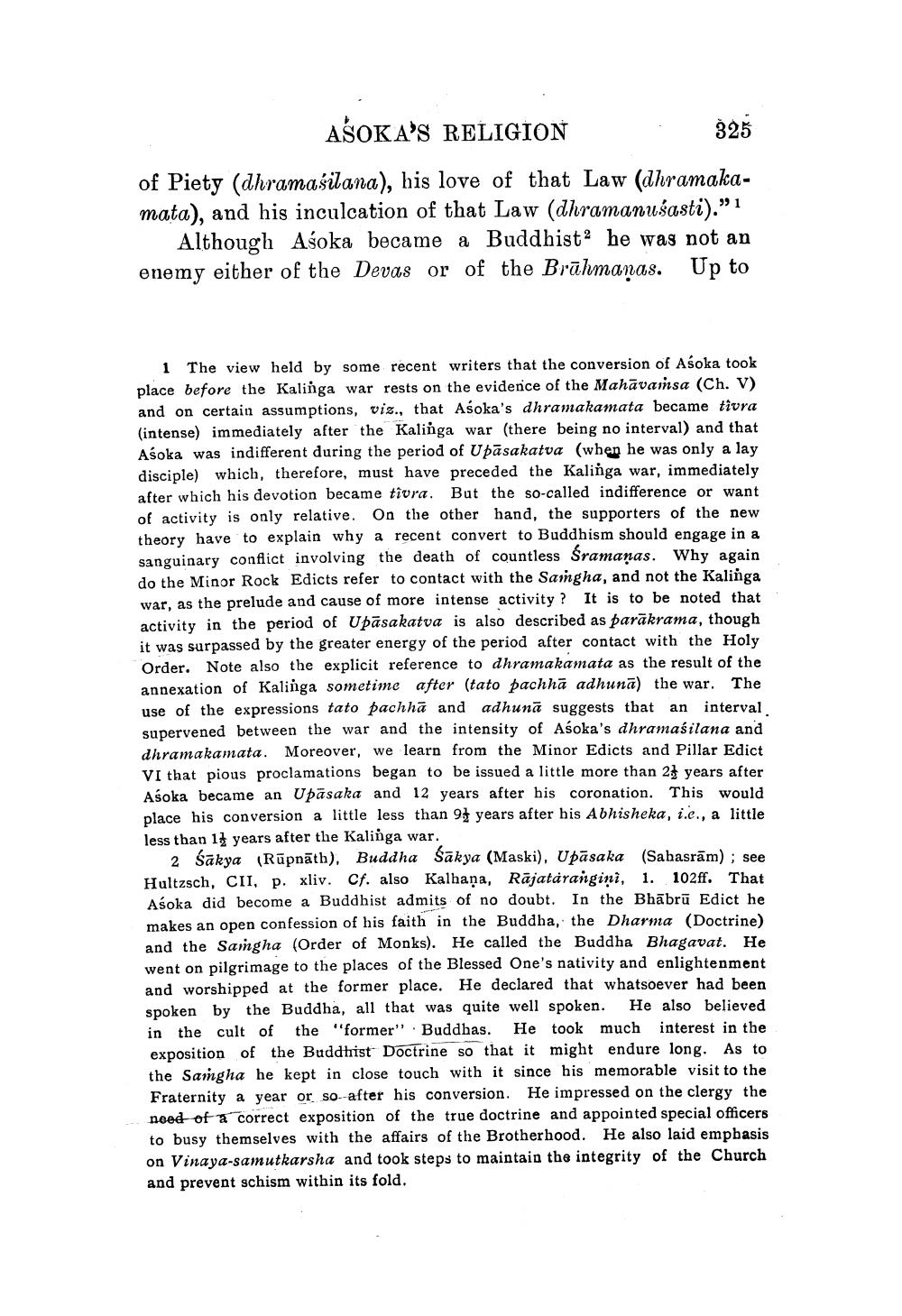________________
AŚOKA'S RELIGION
325
of Piety (dhramašilana), his love of that Law (dhramakamata), and his inculcation of that Law (dhramanuśasti).” 1
Although Aśoka became a Buddhist? he was not an enemy either of the Devas or of the Brāhmanas. Up to
1 The view held by some recent writers that the conversion of Asoka took place before the Kalinga war rests on the evidence of the Mahāvaisa (Ch. V) and on certain assumptions, vis., that Asoka's dhramakamata became tivra (intense) immediately after the Kalinga war (there being no interval) and that Asoka was indifferent during the period of Upāsakatva (when he was only a lay disciple) which, therefore, must have preceded the Kalinga war, immediately after which his devotion became tivra. But the so-called indifference or want of activity is only relative. On the other hand, the supporters of the new theory have to explain why a recent convert to Buddhism should engage in a sanguinary conflict involving the death of countless Sramanas. Why again do the Minor Rock Edicts refer to contact with the Samgha, and not the Kalinga war, as the prelude and cause of more intense activity? It is to be noted that activity in the period of Upāsakatva is also described as parākrama, though it was surpassed by the greater energy of the period after contact with the Holy Order. Note also the explicit reference to dhramakamata as the result of the annexation of Kalinga sometime after (tato pachhā adhunā) the war. The use of the expressions tato pachhā and adhunā suggests that an interval supervened between the war and the intensity of Asoka's dhramaślana and dhramakamata. Moreover, we learn from the Minor Edicts and Pillar Edict VI that pious proclamations began to be issued a little more than 25 years after Asoka became an Upāsaka and 12 years after his coronation. This would place his conversion a little less than 94 years after his Abhisheka, i.e., a little less than 14 years after the Kalinga war.
2 Sakya (Rūpnāth). Buddha Sakya (Maski), Upāsaka (Sahasrām); see Hultzsch, CII, p. xliv. Cf. also Kalhana, Rājatarangini, 1. 102ff. That Asoka did become a Buddhist admits of no doubt. In the Bhābrū Edict he makes an open confession of his faith in the Buddha, the Dharma (Doctrine) and the Samgha (Order of Monks). He called the Buddha Bhagavat. He went on pilgrimage to the places of the Blessed One's nativity and enlightenment and worshipped at the former place. He declared that whatsoever had been spoken by the Buddha, all that was quite well spoken. He also believed in the cult of the "former" Buddhas. He took much interest in the exposition of the Buddhist Doctrine so that it might endure long. As to the Samgha he kept in close touch with it since his memorable visit to the Fraternity a year or so--after his conversion. He impressed on the clergy the need of a correct exposition of the true doctrine and appointed special officers to busy themselves with the affairs of the Brotherhood. He also laid emphasis on Vinaya-samutkarsha and took steps to maintain the integrity of the Church and prevent schism within its fold,




